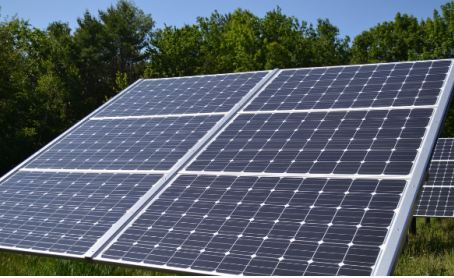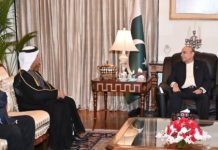DNA
ISLAMABAD: Balochistan Caretaker Chief Minister Mir Ali Mardan Khan Domki inaugurated an extensive solarization project of converting of various public department buildings including educational, institutions, healthcare facilities and civic departments over renewables that will provide clean, affordable and uninterrupted power supply to the public facilities of Balochistan.
The Balochistan government, with the support of Chinese government, has completed the solarization of 12 educational institutions, computer labs & hospitals that have been equipped with modern solar power facilities.
The Chinese Ambassador to Pakistan Jiang Zaidong participated in the inaugural ceremony and expressed his views through video link held at Chief Minister’s secretariat, Gwadar Pro reported on Thursday.
Pakistan’s total solar installed capacity was 1.24 GW by 2022, representing a 17 percent increase over 2021.
The government has proposed many initiatives to increase the share of solar energy in the country. By now, Pakistan’s Solar Energy Market is estimated to increase at a compound annual growth rate (CAGR) of 49.68 percent from 1.30 gigatonnes in 2023 to 9.77 gigatonnes in 2028.
In the specific case of Balochistan, according to the Central Asia Regional Economic Cooperation Program, Pakistan’s total technical solar and wind potentials are 2,900 GW and 340 GW, respectively.
Additionally, Balochistan has the potential to implement greater than 14 GW of Renewable energy within 5-10 years through least-cost pathways, including PV utility scale plants of 9,500 – 11,500 MWp.
Balochistan’s geography, irradiance, and location make it one of Pakistan’s most high-potential provinces, with respect to renewables.
Decentralized microgrids paired with solar generation could be used to increase reliable electricity access for rural residents.
While microgrids generally only provide basic electrification (high quality lighting and charging of a mobile phone), it is able to do so for multiple households at a significantly lower cost over in the long run.
An estimated 36 percent of Balochistan is electrified, so this pairing has immense potential for the province. In the future, the province is poised to become the country’s most booming solar power growth hub.
In a remarkable turning point, International Energy Agency (IEA) recently reported solar energy is set to attract more capital investment than traditional oil for the first time ever.
In 2023, an average of approximately USD 1 billion per day (USD 380 billion for the year) are being invested in the solar industry, exceeding investment in oil production for the first time (USD370 billion for the year).
“Under such a background, Pakistan stands at a crucial juncture,” Ali Majid, Pakistan General Manager of Global leading solar provider LONGi, underlined, “through constantly renovate clean energy technology, not only solar, we can secure a sustainable and clean energy future while reaping the economic benefits that come with the global shift towards renewable energy sources.
Obviously, the China-Pakistan Economic Corridor (CPEC) has also played a crucial role in fostering solar energy cooperation between the two countries, we are going to play a leading role in the industry, making CPEC a greener corridor.”












